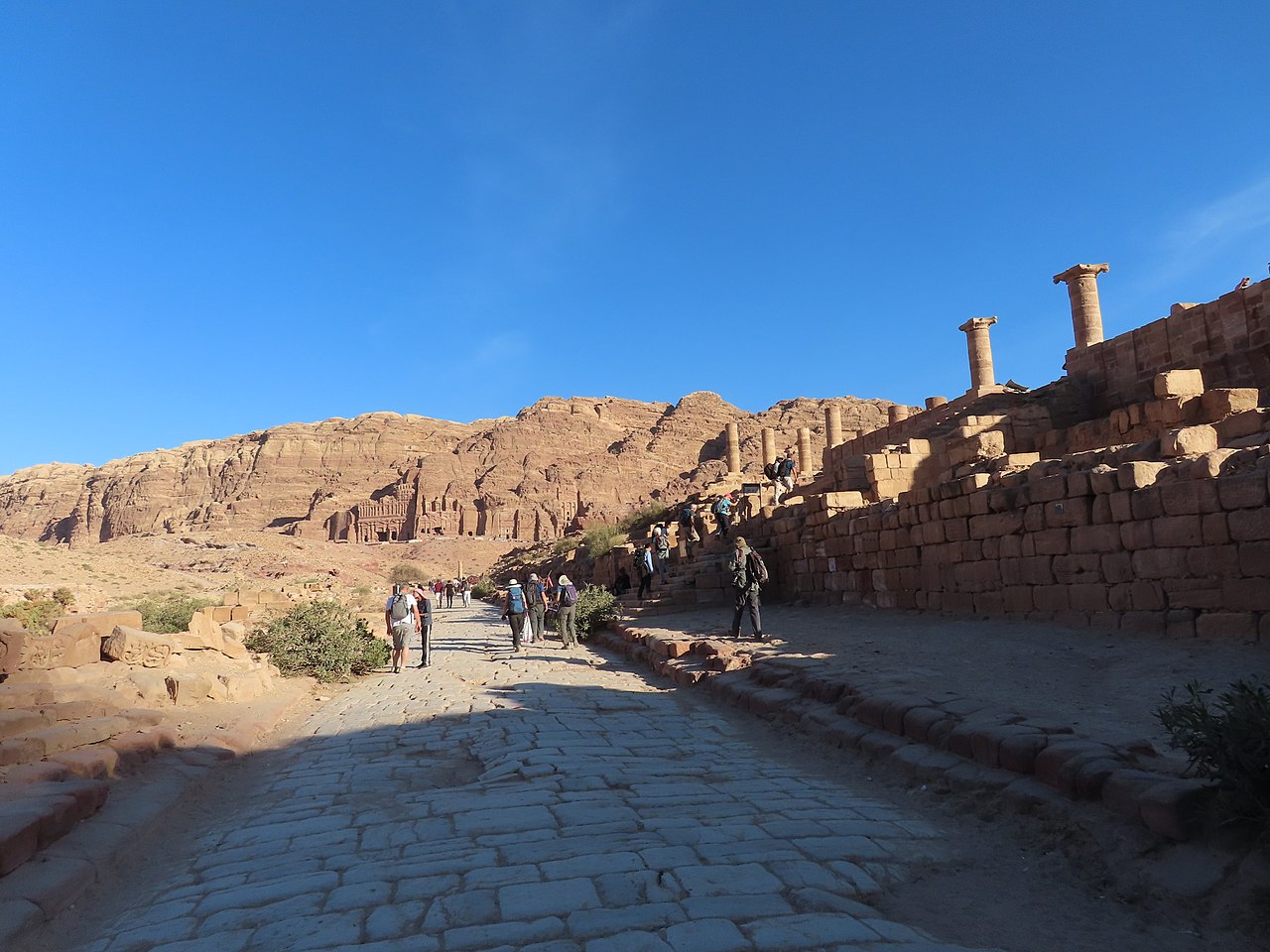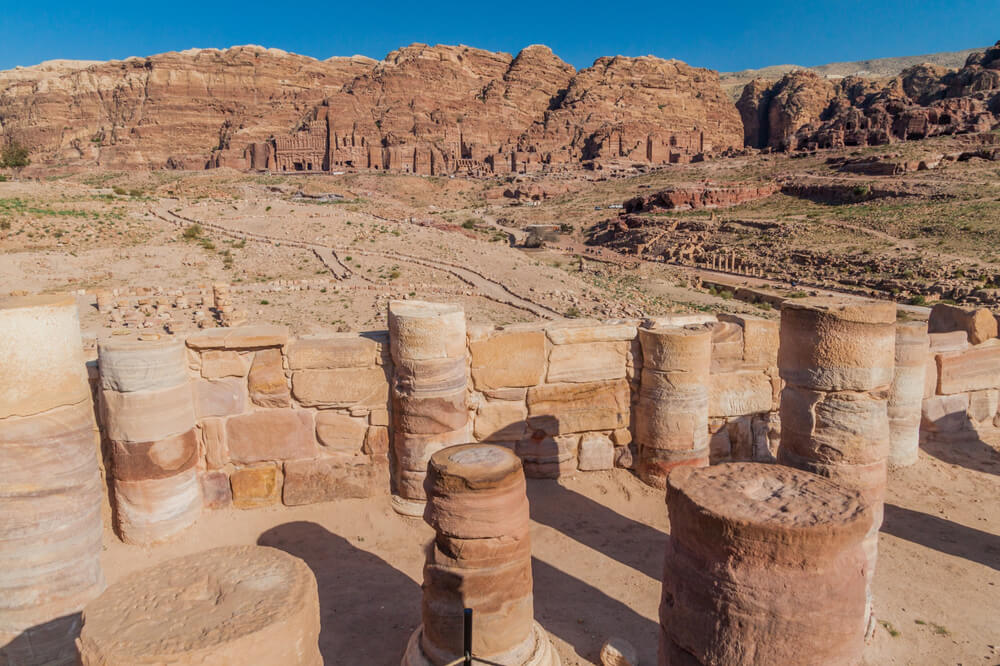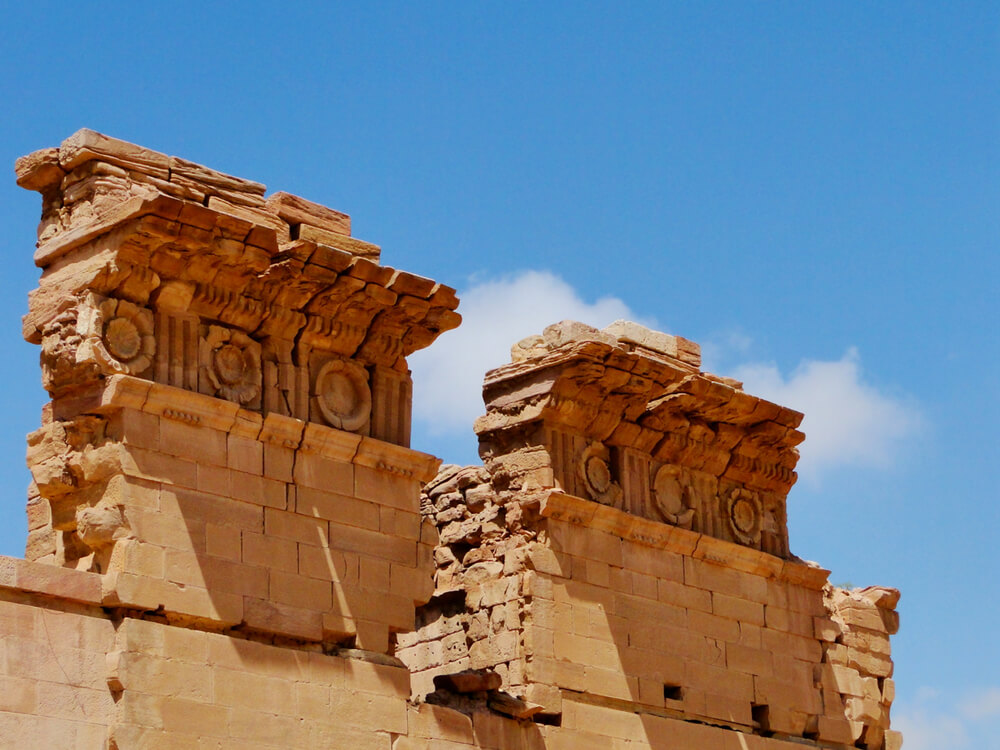Plan Your Visit
The Temple of the Winged Lion is one of the free-standing Nabataean structures in Petra Jordan. It was not carved out of the red-hued rock cliffs of Petra like most of the ancient city. It was constructed during the reign of Nabatean King Aretas IV (9 BC-40 AD) and was part of a temple complex at the end of Petra’s Colonnaded Street that includes Qasr al-Bint, and the Great Temple.
 The Temple of the Winged Lions (Image source: Fallaner CC BY-SA 4.0)
The Temple of the Winged Lions (Image source: Fallaner CC BY-SA 4.0)
Pro Tip: Stand at the Winged Lions Temple for great shots of Petra. Although experts aren’t sure which god was worshiped here, they think it may have been the goddess al-Uzza. One of the most precious finds during the excavation of the temple was an “eye-stele”, a stone slab featuring a pair of eyes. On the stele was inscribed “Goddess of Hayyan, Son of Nayibat". The main reason to include the Winged Lion Temple in your Petra visit is that it is free-standing and different from the other rock-hewn Petra structures.
The temple was used for worship at the beginning of the 1st century AD. At the time a bridge would have crossed the wadi and connected the temple to the Colonnaded Street. The temple remained in use until the 363 AD earthquake. Like the rest of Petra, the temple was forgotten for many years. It was only when explorer Johann Ludwig Burckhardt rediscovered Petra in 1812 that Westerners became aware of the hidden archaeological gem. Many parts of Petra were excavated and the city was slowly uncovered one structure at a time.
 The temple's columns
The temple's columns
It was only in 1973 that the temple was discovered using electronic sounding and excavation began, led by archaeologist Dr.Philip C. Hammond. The winged lions featured on the column capitals inspired the name of the site.
Excavations continued until 2005 and today further exploration of the site is underway. The remains of the temple have given researchers insight into the religious life and customs of the Nabataeans.
As you approach the temple you’ll see a grand entrance with a double colonnade that continues for 85 meters leading to a porch that is 9.5 meters long. The entrance is flanked by large 13-meter-high columns.
 The beauty of the Temple of the Winged Lions
The beauty of the Temple of the Winged Lions
Through the entrance is a 100m² antechamber or entrance room typical of Greco-Roman temples in Israel and Jordan. The inner chamber or cella is flanked by columns.
In the main area of the temple’s interior, there are the remains of twelve columns with capitals featuring winged lion figures. At the far end of the chamber are stairs to a raised platform where priests would have made sacrifices on the altar.
The wall behind the altar has niches that once held stone idols and religious objects. When it was first built the inner temple walls would have been adorned with paintings and stucco decoration. But in the years that followed the structure was repurposed and the artwork was wiped out.
On the western side of the temple interior is a complex of small “rooms” where workmen would have created paintings, metalwork, and stonework. They would have produced figurines from marble, bronze, and iron, as well as painted ceramics, and aromatic oils for the temple and for export.